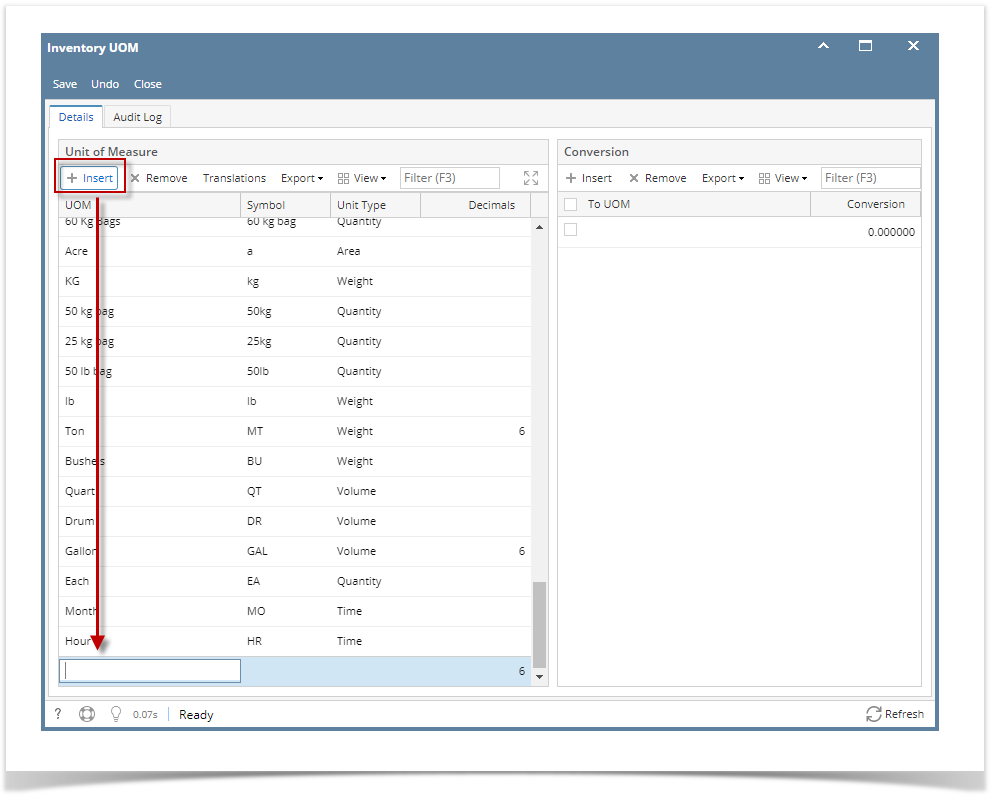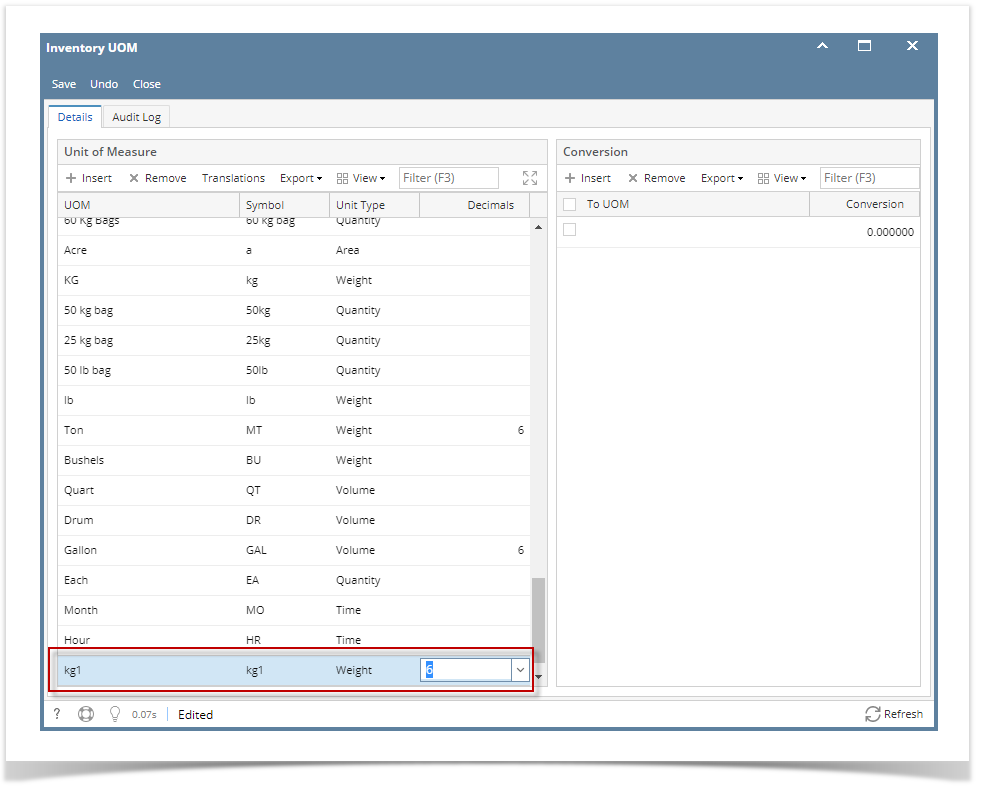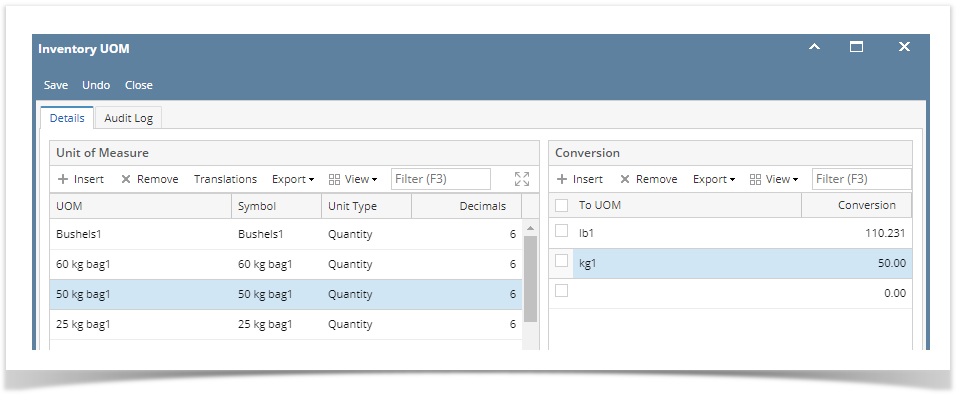UOM conversions has to be setup in this pattern. 1 UOM = ? Other UOM. When you want to know how many kgs makes a lb, you search for 1 lb to ? kg. System should look for conversions in the same pattern.
Examples
1 UOM = ? Other UOM
1 20 LB Bag = 20 LB - Enter the conversion when you set up 20 lb bag and not when you set up LB
1 50 KG Bag = 50 KG - Enter the conversion when you set up 50 kg bag and not when you set up KG
1 KG = 2.20462 LB - Enter the conversion when you set up KG
1 LB = 0.453592 KG - Enter the conversion when you set up LB
So you should not set up conversions to lb bags when you are setting up LB unit. Rather convert to lb when you set up x lb bags
There is no restriction if the user decides to set up the other way around. However they have to input the reciprocal value.
Example
1 KG = 0.02 50 kg bag
Stock Unit
When setting up UOMs for an item, category or commodity, users have to select one UOM as Stock Unit. System provides On Hand, On Order, Committed, Back Ordered etc in Stock Unit. Standard Cost and Retail price is maintained in Stock Unit. Inventory valuation is done in Stock Unit. The Unit Quantity of a stock unit is always one. Conversion factor is setup against the stock unit for the all UOMs. Conversion between units are done through Stock Unit.
Hierarchy of UOM definitions
UOM can be configured in 2 places Commodity Maintenance and Item Maintenance.
Commodity Maintenance
User can setup UOMs for commodity. They do not have to setup for each individual items. When a commodity is selected in item setup, system will automatically copy the UOMs from the category/commodity.
Item Maintenance
Users can skip setting up UOM for the commodity and setup for each item instead. This may be required if you have different units inside a pack for different items of the same category.
Inventory UOM Maintenance
This is the primary template for setting up UOM. Conversions defined here will be brought forward to Commodity and Item maintenance screens when user setups up UOM for the category, commodity or item.
- From Inventory module > click on Inventory UOM menu.
The Search screen for Inventory UOMs will be shown.
- Click Insert button
- Enter UOM Name and Symbol.
- Then select a Unit Type. There are six different unit types to identify the UOM.
- Area
- Length
- Quantity
- Time
- Volume
- Weight
- Then set the number of Decimals (Number of decimal places that will be used for conversion)
- Conversion grid will need to be setup for UOM's. The proper setup would be is how many/much of the stock UOM for the selected Other UOM.
- Like in this example, select 50kg bag, then on the conversion grid select KG1 then enter 50 in the "To UOM" field. This means that there are 50 KG in a 50kg bag.
- Select another uom on the conversion grid, LB then enter 110.231 conversion. This means that there are 110.231LB in a 50kg bag.
- Save the record. You can click the Save toolbar button to save it. In case you miss to click this button and you click the Close toolbar button or the x button at the top right corner of the screen, i21 will prompt you if you would like to save it before closing the screen.


